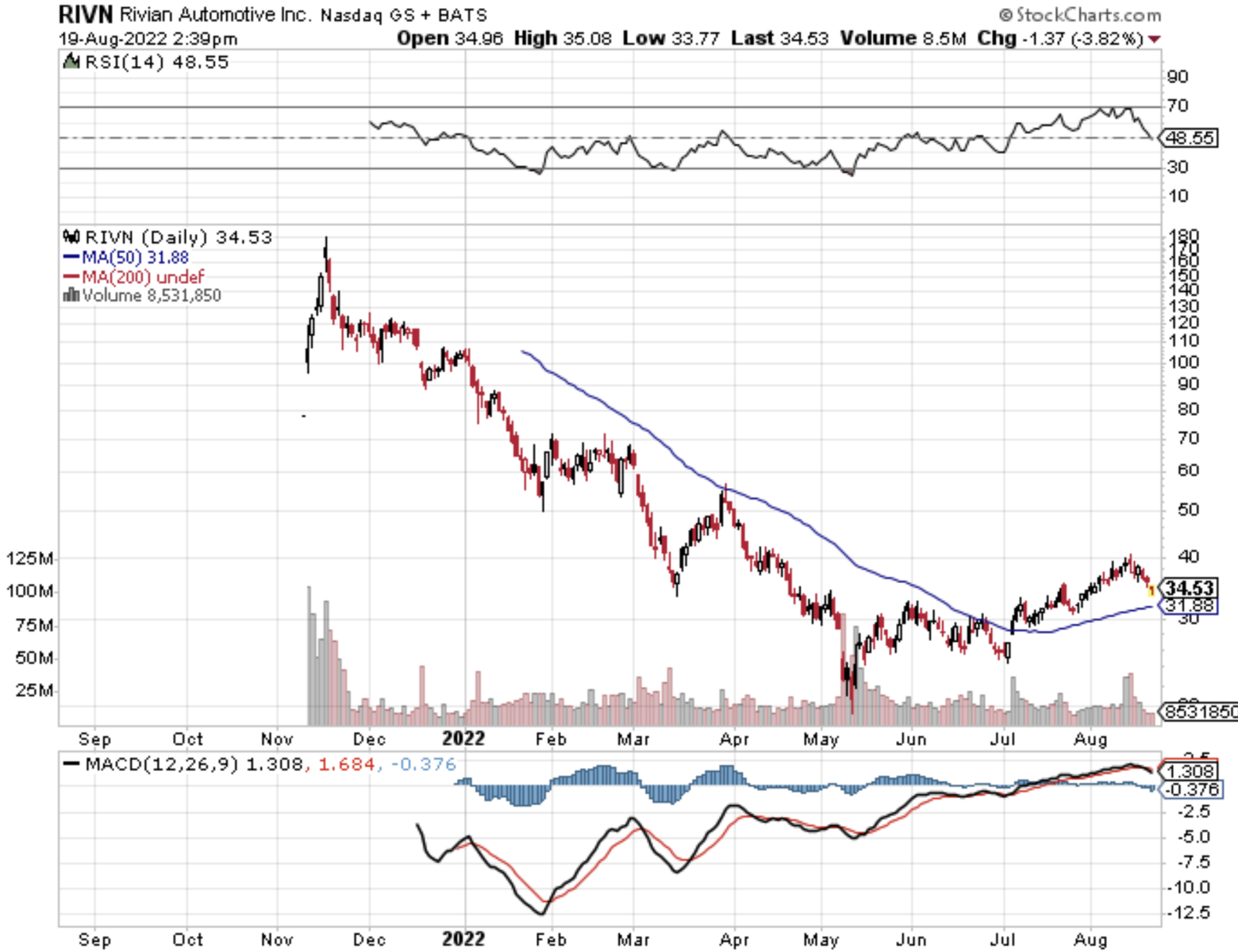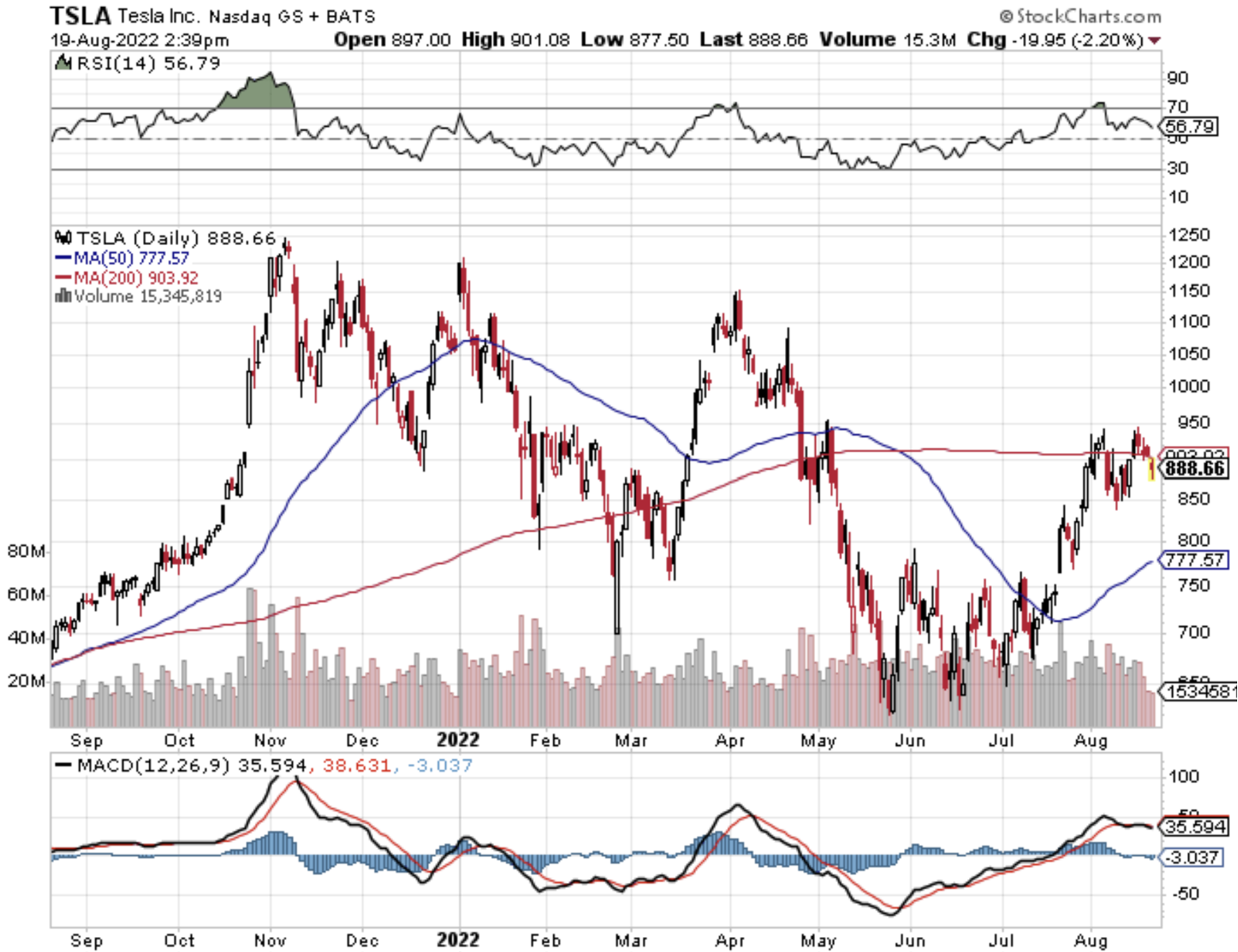Rivian (RIVN) produces nice EVs, but their business model still needs to work out the kinks.
Creating an EV company from scratch these days is something that doesn’t get a lot of attention.
Bellwether EV company Tesla (TSLA) built its reputation when doing something like this was easier. We assume it’s like a walk in the park.
Now the post-health situation world has really put the clamps on business with energy not cheap anymore, made in China not working smoothly, and the strong dollar making sales from abroad lower in greenback terms.
Naturally, RIVN has felt all these bottlenecks and the usual result is losing money.
This has forced RIVN to raise prices as it is discontinuing the cheapest versions of its pickup truck and SUV models, citing low customer demand.
Eliminating the base version, coined the Explore package, now means the most affordable pickup truck in the R1T model line will have a price of $73,000—an increase of $5,500, Rivian said. The least expensive version of its all-electric SUV, the R1S, is now $78,000.
These mid-$70,000 EV pickup trucks will most likely be closer to $100,000 in 2-3 years as inflation isn’t going anywhere.
RIVN isn’t profitable when selling at the lower price point and raising prices will effectively lower demand but not by too much.
This isn’t the first time RIVN has jacked up prices, but truthfully, it is just a sign of the times.
Actually, this is the second time that Rivian has gone rogue citing rising raw-material costs, particularly for batteries, and manufacturing difficulties that have led the company to report a $1.7 billion loss for the second quarter.
Today, the world's biggest nickel producer, Indonesia, may impose a tax on exports of the metal this year, President Joko Widodo says.
It pours fuel on the fire.
Back in March, RIVN raised prices by $20,000, even the ones who had already put down a $1,000 deposit to reserve their vehicles.
RIVN is now in an unenviable position of slashing costs to conserve cash and giving priority to certain trims of its vehicles in an effort to boost factory output.
Rivian said it aims to produce 25,000 vehicles this year from its plant in Normal, Ill.
Luckily, the Federal government has given EVs a new subsidy where any electric truck or SUV selling for over $80,000 would become ineligible for the $7,500 tax credit under the planned revisions.
Naturally, after the $80,000 price point breaches, it’s a mere formality that prices will need to compensate the lost tax credit and go straight to $90,000 and above like a runaway train.
As expected, the company is losing lots of money and at the end of June, it had about $15.46 billion in cash and cash equivalents, about $1.5 billion less than at the close of the first quarter.
The company has a great product that consumers want, but producing these cars at scale at an affordable price is the issue.
I would wait for the stock to drop from $35 to $25 then hold long term and incrementally add as the stock goes down.
If the operations teams can pull out a few victories here and there, then sourcing the next factory is in the cards to increase output.
It’s not just a RIVN problem, Tesla (TSLA) and Lucid (LCID) have also increased prices as well, but Tesla has a larger balance sheet and a profitable busine model.
Scale into this stock at lower levels and put it away for the long term. If the company survives, the stock price will be higher in the long term especially if someone can get the Chinese back in the factories.





